Browse Primary Sources
Locate primary sources, including images, objects, media, and texts. Annotations by scholars contextualize sources.
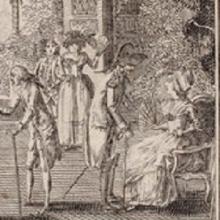
Opening of the Club of the Revolution: Circus Act
This engraving depicts a revolutionary club as a circus act complete with dancing dogs and clowns, all celebrating "the law and the King." This image might have been visual propaganda on behalf of clubs, suggesting that they could bring different people together under a big tent, in support of the constitutional monarchy, or it might have been visual farce, suggesting that the clubs and the con
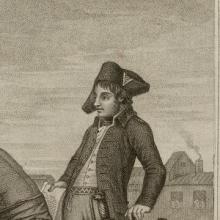
The Death of Robespierre
This engraving, based on a color portrait by Beys, depicts the death of Robespierre on the guillotine. The executioners wear not the traditional hangman’s hood but red bonnets representing liberty. This judgment notes Robespierre’s failure to the Revolution itself.
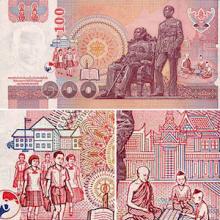
Traditional and Modern Primary Education in Thailand
The image shows the reverse of a Thai 100-baht banknote, with engravings of of King Chulalongkorn and King Vajiravudha statues. The banknote's background theme is education. The detail on the right illustrates Thailand's traditional education system, showing a monk instructing boys in the courtyard of a temple.

Young Voices on Disability, India
Yellamma Gangadhar is a young woman who relies on a wheelchair for mobility. Her film tells the story of abandonment by her parents at a bus station in Bangalore, India, subsequent help from the Leonard Cheshire home in the city, and the college education she acquired with great difficulty. The struggle featured in the film is access discrimination.
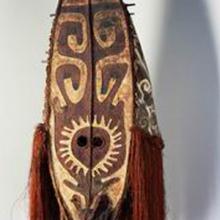
Boys' Initiation Mask (keweke)
This mask worn by boys during initiation rituals in Papua New Guinea is made of painted bark cloth and canvas stretched over a cane frame. The long fiber fringe adds movement to the mask, which is worn during dances and other secret rituals that that comprise boyhood initiation rites.
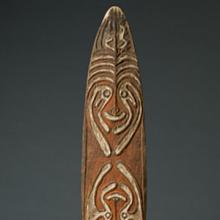
Gope, Ancestor or Spirit Boards
The object in the photograph is a gope, or spirit board (also called kwoi or hohao). This example is from Papua New Guinea near the Wapo Creek on the Gulf of Papua. Carved from an old canoe, this art form derives from the protective splashboard of the outrigger canoe, which was carved with a human face and was believed to have protective qualities.
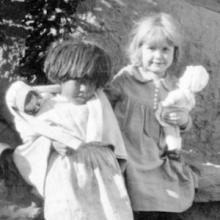
American Indian Girls Playing with Dolls
In this photograph, taken near the turn of the 20th century, American Indian girls in the southwestern United States are learning through play how to be mothers and keepers of the home. In this photograph, a Hopi girl in Arizona follows her mother's example; she wraps her baby doll in a blanket and carries her on her back, in contrast to the Anglo girl who holds her doll in her arms.
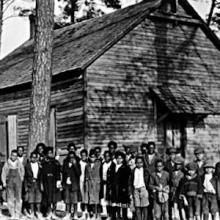
Blocksom’s School
These two photographs show before and after pictures of Blocksom's School in Sussex County in rural Delaware. The first photo (taken in 1917) shows the pupils standing outside the original one-room schoolhouse made of wood.
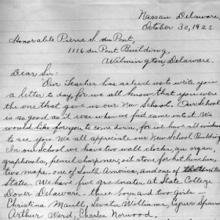
Student Letter to Pierre DuPont
Thelma Norwood, a 7th-grade student in Nassau, Delaware, wrote this letter in 1925. The school was segregated, or used only by African Americans, while separate schools were maintained for white students.
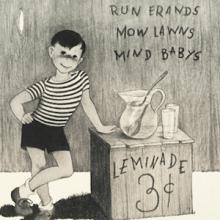
The Lemonade Stand
The lemonade stand is a widely used and recognized symbol of capitalism and in particular entrepreneurship. The selling of lemonade on the streets of New York can be traced back to when a New York youngster sold it to thirsty street car riders over 130 years ago. Its connection to youthful entrepreneurship has endured.
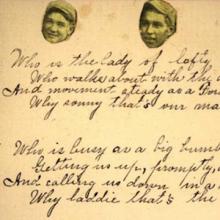
Christmas Poem, Pima Indian School
The poem and photographic collage is the work of students at the Pima Indian School boarding school near Phoenix, Arizona, and is part of an album probably owned by the school matron. The school was one of some 150 institutions for Indian wards of the U.S. Government.
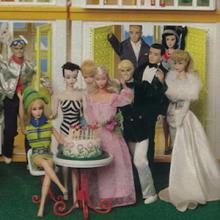
Barbie Turns 21
Barbie—who is today the most famous doll in the world—was based on Lilli, a sexy and sassy German doll first produced in 1955. Co-founder of Mattel Inc., Ruth Hander transformed the Teutonic doll from floozy to fashion queen for American girls like her daughter, Barbara, after whom the doll was named.
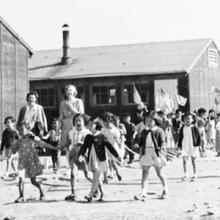
Schoolchildren at Minidoka Incarceration Camp
Minidoka incarceration camp, near Twin Falls in southern Idaho, was one of 10 incarceration camps run by the War Relocation Authority (WRA) that held citizens and non-citizens of Japanese descent during World War II. The 33,000 acres of arid desert were dominated by sagebrush, and residents contended with a harsh climate and poor living conditions.
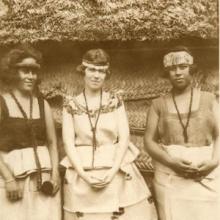
Margaret Mead, Coming of Age in Samoa
In 1928, Martha Mead published Coming of Age in Samoa, an anthropological work based on field work she had conducted on female adolescents in Samoa. In Mead's book that became a best seller and unleashed a storm of controversy, she argued that it was cultural factors rather than biological forces that caused adolescents to experience emotional and psychological stress.
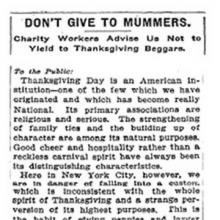
Thanksgiving Newspaper Article
Thanksgiving was not uniformly celebrated until major efforts to nationalize it were undertaken late in the nineteenth century. Despite Lincoln's proclamation that made Thanksgiving a national holiday during the Civil War, few Americans celebrated the holiday like middle-class Protestants in New England and the Mid-Atlantic states did.
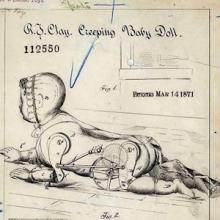
Creeping Baby Doll Patent
Strongly influencing the invention of Robert J. Clay's mechanized "Creeping Baby Doll" in 1871, were changing notions of childhood that fostered children's development.
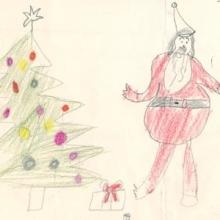
Writing a Letter to Santa
Whether known as Saint Nicholas, Sinterklaas, Father Christmas, Kris Kringle, Babbo Natale, Christkind, Père Noël, Santa Claus ("Santa") or by many other names, this legendary gift-giver in European folklore and hagiography is well known around the world.
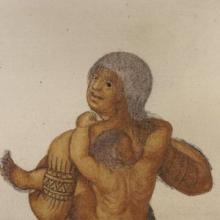
Carrying Native-American Babies
This watercolor (fig. 1) of a mother carrying her baby was painted c. 1585 by John White who explored the mid-Atlantic region with other Englishmen including Thomas Hariot. Hariot's A Briefe and True Report of the New Found Land of Virginia published in 1590 included an illustration based on White’s watercolor by engraver, Theodore de Bry. (fig. 2)
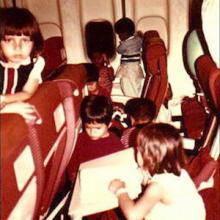
Operation Babylift
These photographs were taken on April 5, 1975 on one of the Pan Am passenger planes that airlifted Vietnamese orphans and Amerasian children of American servicemen and Vietnamese women for Operation Babylift.
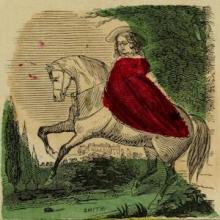
Little Eva, The Flower of the South
Published around 1853, Little Eva, The Flower of the South is an anonymously written children's story based on Eva, the enormously popular character in Harriet Beecher Stowe's anti-slavery novel, Uncle Tom's Cabin (1852).